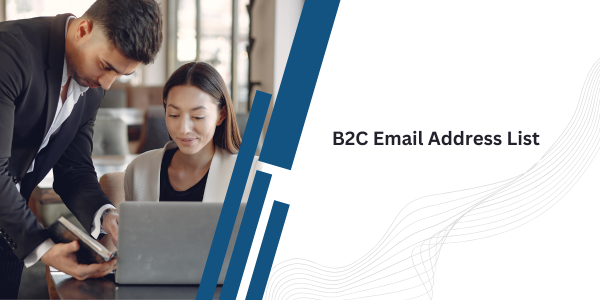In the context of B2C email marketing, an active and healthy email list means your subscribers are engaged, and your messages reach effectively. Quite often, marketers fall into a solid drag of subscribers who have not opened or clicked on any of their emails over a long period of time. It is pretty important that the inactive subscriber gets managed properly, so his or her effect will be reduced on email deliverability and other metric averages. How to handle the inactivity of subscribers within your B2C emailing list effectively. Some tips are mentioned below.
Identification of Inactive Subscribers
The entire process begins with the identification of inactive subscribers. Generally speaking, an inactive subscriber is a person who has not opened or responded to your emails within a certain period, say six months or one year, which depends upon your business and audience. Use your email marketing platform to segment your list based on open rates, click-through rates, and interaction history. By identifying these subscribers, you will have a way to tailor your approach to re-engagement.
Segment Your List
Once you've found a list of inactive subscribers, segment them out separately so that you can easily send re-engagement campaigns to them B2C Email Address List without hurting the engagement metrics of your active subscribers. Segmentation of the list helps not only in managing the communication but also helps in personalizing the messaging based on past interactions.
Re-engagement Campaigns
Re-engagement campaigns aim at winning back subscribers who have grown cold. Think about the design of several emails oriented at re-awakening their interest. Following are some ways to do so: .
Personalized Content: The subject line and content of your re-engagement emails should be personalized and depend on the subscriber's past behavior. For example, if they were showing interest in certain products or topics, send targeted content with a special emphasis given to those interests.
Incentives: Giving an incentive is indeed a much better motivator. Think about offering special discounts, free shipping, or any special promotion in order to bring an inactive subscriber back to re-engage with your brand.
Feedback Requests: Send in a short survey to ask why they have become inactive. Being able to understand such reasons, you can adjust your marketing strategies for overall customer satisfaction.

Clean Up Your List
If your re-engagement efforts don't go so well, cleaning your email list might be a good idea. Having subscribers that have been inactive on your list can hurt your email deliverability and engagement rates. After a pre-defined re-engagement campaign, remove the subscribers who remain unresponsive. Always send a final email as a courtesy for letting them know you will remove them if they don't engage. This can be your last hope of keeping them connected with your brand through the email.
Refine Your Email Strategy
Handling inactive subscribers also creates the opportunity to reassess and refine one's email marketing strategy. Reflect on content, frequency, and time of sending emails. Are you sending too many emails? Is the content relevant to the audience? Handling these factors will improve overall engagement and reduce the chances of future inactivity.
Implement an Engagement Strategy
It is just as much about preventing inactivity as it is about re-engaging those who have become inactive. Implement an ongoing engagement strategy focused on sustaining your subscribers' interest. Consider:
Personalization: Using data on your subscribers, personalize emails so that the content is relevant and of interest.
Consistent Value: Demonstrate regular value through useful content, promotions, and updates. Regularly engage with your audience so they remain interested in your brand.
Loops of Feedback: Encourage feedback through surveys and polls to get an idea of what your audience prefers. This can help you frame future campaigns in a much better way.
- Monitor Engagement Metrics
Continuously monitor the email engagement metrics so that you can identify any trends and patterns. Note open rates, click-through rates, general list health-more importantly, constant study of metrics lets you proactively take steps toward the threat of inactivity well before it evolves into a much bigger problem.
Conclusion
Inactivity management of your B2C mailing list will help in fostering a more quality, active audience. Pinpoint their inactivity, segment them, and then target these inactive subscribers with creative re-engagement campaigns to win back their interest, or clean up your list in order to improve your deliverability. Besides, a number of approaches focused on maintaining constant engagement and improvement of email content may prevent the case of inactivity. Taking care of an inactive subscriber in an active manner will enrich your email marketing; it will also make a difference in your relationship with your audience.